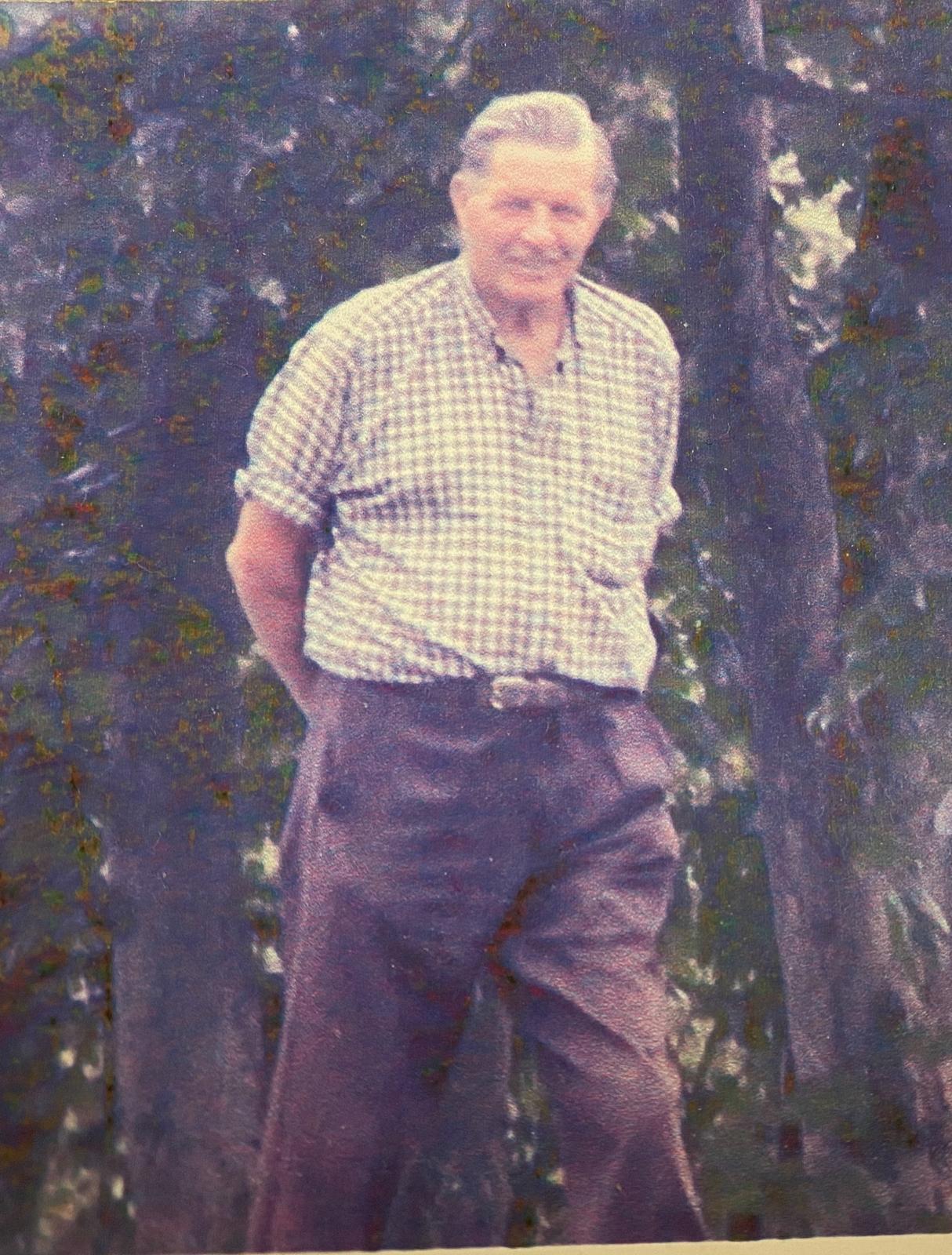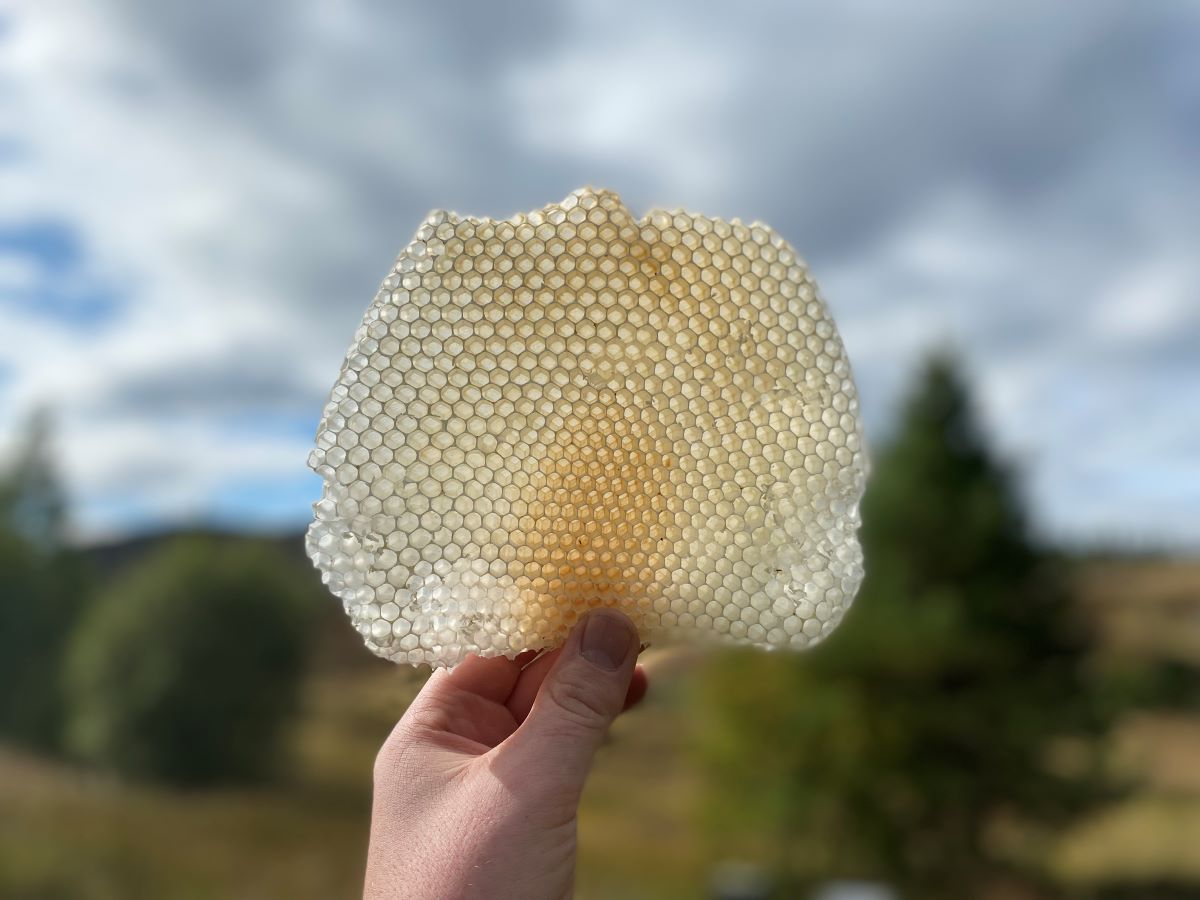As a child Ross Main loved helping his gamekeeper grandfather tend to his beehives.
With no protective gear, it was often a daunting experience, but Ross was happy to be outside, enjoying the bees’ golden nectar.
In 2015, years after his grandfather had died and Ross became a father for the first time, he began to think about the abandoned hives and decided to track them down where his grandfather had kept them in East Lothian.
Much to his astonishment he discovered one solitary hive in a dilapidated state had survived and was still thriving with bees.
‘My son had been born in 2015 and I had the strangest sense of longing and nostalgia to see if the bees were still there,’ Ross said.

Ross loved to help his grandfather with the hives as a child.
‘I think it was the fond memories of my grandad and my childhood and maybe an inclination to recreate this with my son.
‘My grandad had passed seven years previously and I fully expected there to be no sign of any bees but I went down to Dunbar to have a look anyway.
‘I was pretty astonished to find one solitary hive in a dilapidated state but yet still thriving with bees.
‘I spoke nicely to my wife about getting into beekeeping as a hobby and bringing that one hive up to Fife and she didn’t say no.’
Ross transferred the bees to their new home in Fife and started to learn how to care for them and grow the colonies by watching videos on YouTube.
‘I had no experience whatsoever and to be honest while I had enjoyed being with my grandad at the bees, I hadn’t really paid any attention to what he had to do in order to work the hive or gather the honey,’ Ross said.
‘I was quite happy as a 9 year old just to be spending time with him and eating the honey.

Ross began to learn how to care for the bees by watching videos on YouTube.
‘Youtube is a wonderful thing and I instantly had access to a wealth of information about how to begin beekeeping.
‘I started off slowly with that one hive and as it thrived and grew, my confidence built and I started researching how to split and expand colonies.
‘There were many mistakes along the way but to be honest I’ve never made the same mistake twice. Mistakes are definitely the best form of learning.
‘I just bought what I needed as I went along and then once my hobby became a business I learned to reinvest in equipment and materials to make the process more efficient and sustainable.’
Nearly ten years later, Ross now manages 100 hives and around six million bees all descended from his grandfather’s hive.
‘I have over 100 hives across Fife at the minute,’ he said.

Ross now has 100 hives across Fife.
‘In the height of summer there can be up to 60,000 bees in each hive and so you’re looking at potentially six million bees.
‘Almost all of my bees originate from that original hive as it split over time and that makes me incredibly proud of my success.’
Along the way Ross turned his hobby into a business, Main’s Apiaries, selling honey to local farm shops from three harvests a year.
His spring and summer harvests produce a clear, runny honey, but Ross keeps some of his hives in areas of highly concentrated heather which produces a honey much deeper in colour, thicker in texture and more distinctive in taste.
‘Bees forage within a three mile radius of their hive and so will gather nectar from the plants in their local area each of which contribute to the taste and texture of the honey produced,’ Ross said.
‘Typically the Spring honey is based on nectar gathered from hawthorn, dandelions, oil seed rape and sycamore trees.
‘Summer honey is gathered from clover, rose bay willow herb, poplar trees and brambles. The honey produced from both of these tends to be quite clear and runny.
‘Heather honey is produced when hives are located within an area of highly concentrated heather plants.
‘This is classed as a monocrop and means that all nectar came from the same crop.
‘This results in a deeper colour of honey that is often thicker in texture. It also has a more distinctive, stronger taste.
‘In a good season with decent weather we can get between 60 and 70 jars of honey per hive,’ Ross said.
‘The heather season is naturally shorter and we only move some of our hives to the heather region and so this honey is always more in demand.

In a good season with decent weather Ross can get between 60 and 70 jars of honey per hive.
‘The honey itself is special because its as natural as it comes.
‘We literally lift the comb from the hive, spin and extract the honey and filter it straight into the jars. We don’t treat the honey or heat it – we don’t need to.’
Ross loves knowing that in his own way he is contributing to the survival of the honeybee species.
‘Honeybees are so incredibly important to society and the more people that know this, the better,’ he said.
‘I love spending time with my own children and teaching them everything that I already know.
‘Watching them develop the same passion that I have reminds me so much of my grandads influence on me and there’s a part of me that hopes that whatever they choose to do in the future, they’ll look back on and remember spending time with the bees with fondness and good memories.’
Read more Producer’s Corner here.
Subscribe to read the latest issue of Scottish Field.
TAGS

